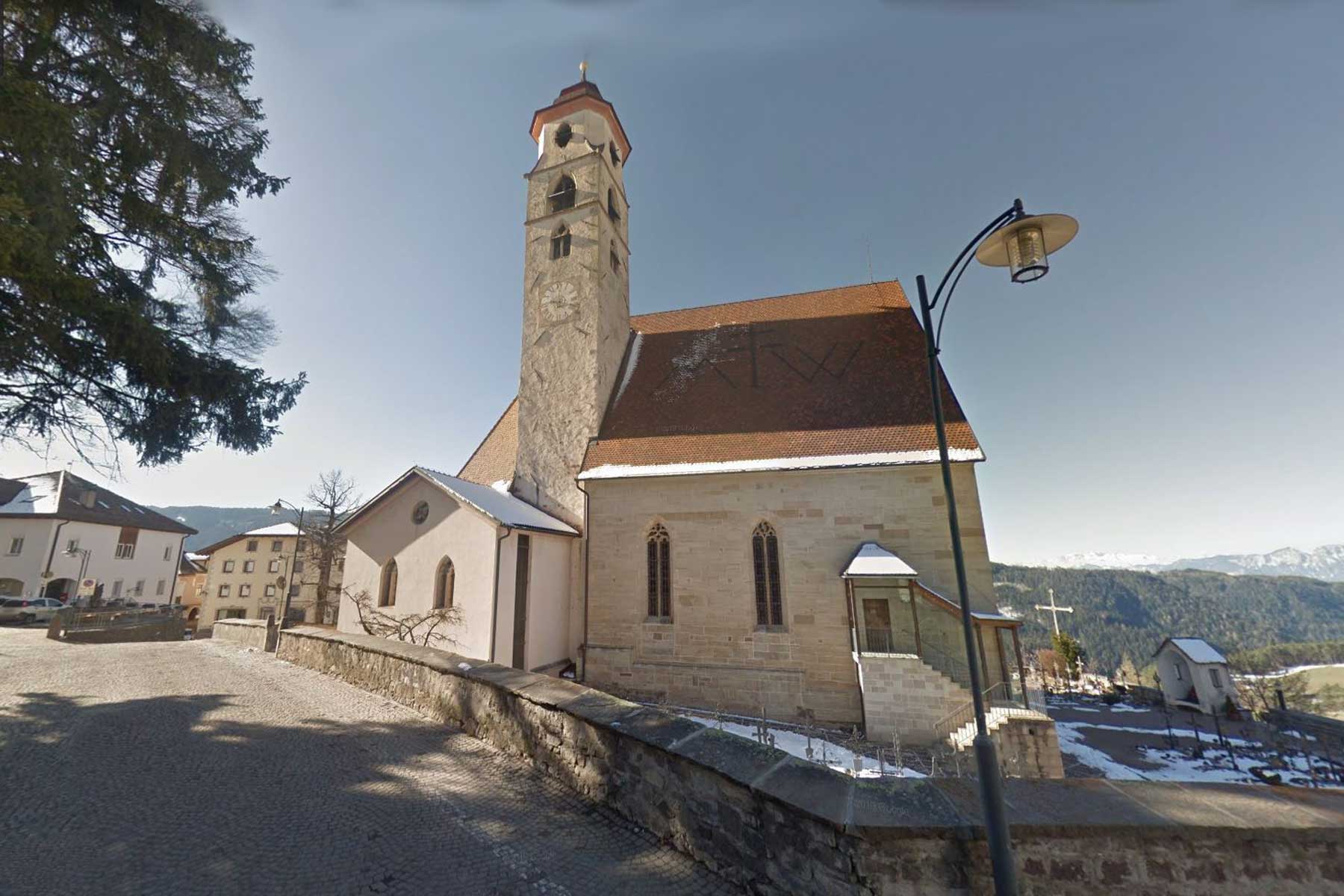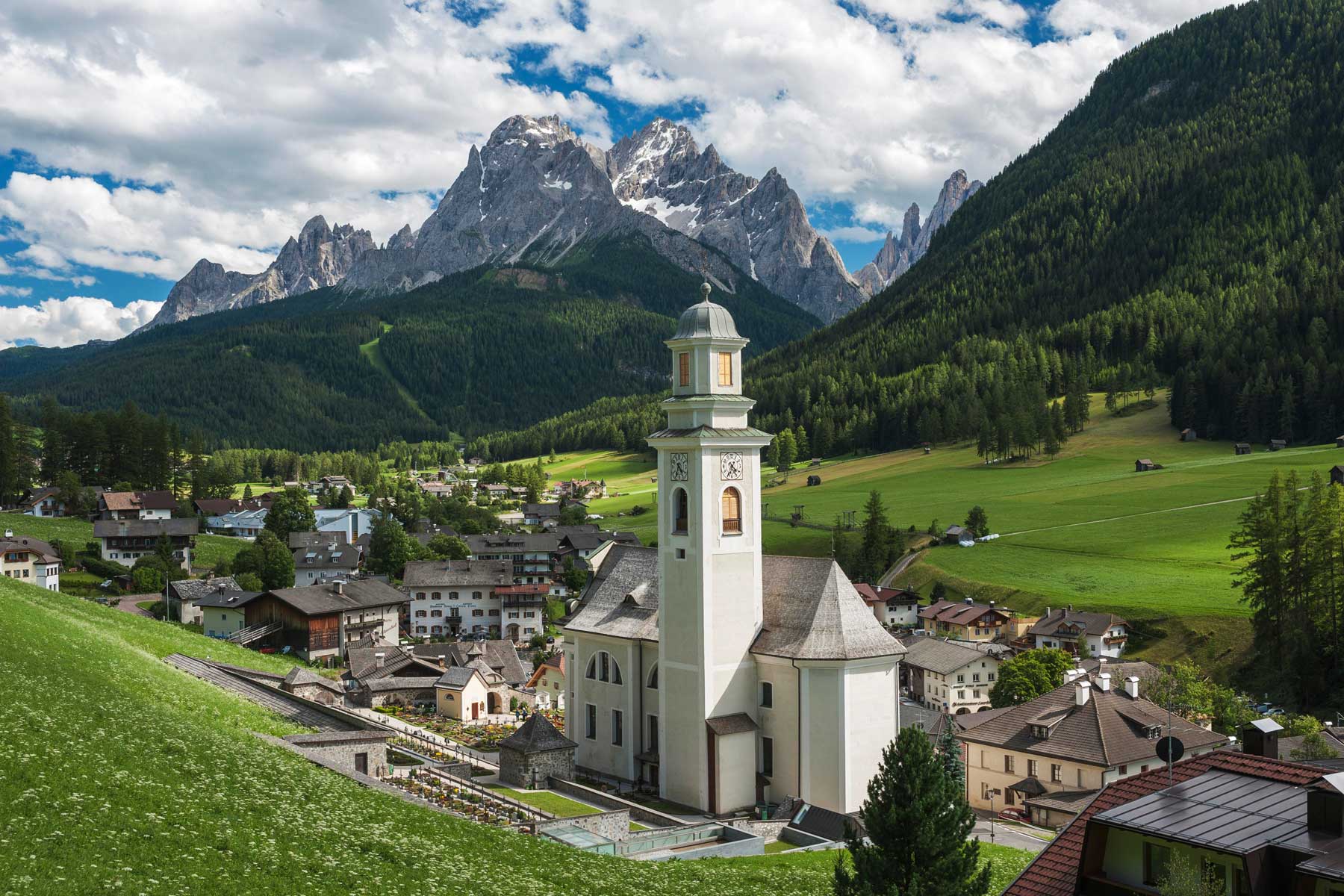The Dolomites offer many sights centred around nature, culture and traditions – Museums, churches, chapels, castles and monuments in South Tyrol
In addition to a breathtaking natural landscape that is impressive all year round, the holiday region is also characterized by its unique cultural treasures.
The holiday locations of Valle Aurina, Valle di Anterselva, Arabba, Cortina, Val d’Ega, Valle Isarco, Val di Fassa, Val Badia, Val Gardena, Val Casies, Alta Pusteria, Plan de Corones, Sciliar, Sesto and Val di Fiemme all offer lot of sights for visitors interested in culture.
Numerous tourist attractions such as museums, churches, chapels, monuments and ruins of times gone by, ensure that your stay is a special one even away from the hiking trails and skiing areas. Magnificent fortresses and castles, that artfully blend into the unique natural landscape of the UNESCO World Heritage Site, are popular trip destinations for the whole family.
Impressive frescoes, paintings and sculptures by well-known South Tyrolean artists can all be found in the churches and chapels of the villages.
Experience the various cultural offerings available in your holiday region and enjoy unforgettable days in the Dolomites.

A selection of the most beautiful sights:

The Museum de Gherdëina in Ortisei, Val Gardena
A visit to the Museum de Gherdëina gives an insight into the centuries-old tradition of wood carving, the natural landscape of the Dolomites (fossils, minerals, flora and fauna) and the Ladin culture. Old wooden toys, collected with great care and thoroughness by Johann Senoner Vastle, take visitors back in time between 1750 and 1940 and into the imaginative world of childhood. A separate section of the museum is dedicated to Luis Trenker, the famous mountaineer, film star and author from Val Gardena.

Prösels Castle in the Sciliar area
Prösels Castle is located near Fiè allo Sciliar and is a popular destination for families and culture lovers. It was built around 1200 by the lords of Völs and transformed into a grand Renaissance castle in the 16th century by Leonhard von Völs. Today, castle tours are offered during the summer months and there are numerous cultural events such as concerts, theatrical performances and exhibitions.

The Ladin Museum Ciastel de Tor in Val Badia
The Ladin Museum Ciastel de Tor has been located at Ciastel de Tor in San Martino, Val Badia since 2001. Its main focus is on the history, culture, language, craft and traditions of the Ladin people in the Dolomites. In addition to this, part of the museum features archaeological finds from Ladinia. In the natural sciences section of the museum, the geology of the Dolomites is presented and displayed in an interesting, engaging way.

The Ladin Museum in Val di Fassa
The main building of the Ladin Museum in Fassa hosts the ethnographic collections of the Ladin Cultural Institute. Local exhibitions by the museum offer visitors a folkloristic tour of the entire Val di Fassa. Embark on a journey into the history and culture of the Ladin people.

The old mill in Arabba
The old mill, where the inhabitants of Arabba have milled rye and barley for centuries, was in near ruin. However, the community of Pieve di Livinallongo - Marmolada restored it and so the mill was saved and turned into a memorial. It is a masterpiece with few mechanical elements and still functions flawlessly.

The Museum of Modern Art Mario Rimoldi in Cortina
The museum has one of the most significant private collections in Italy: more than 300 works by the greatest artists of the 20th century such as Campigli, De Chirico, De Pisis, Sironi, Guttuso, Morandi, Music, Savinio, Tomea and many others can be viewed and admired. Many of the museum's pieces of art are exhibited on an alternating basis. In addition, loans from other museums and international art collections are frequently displayed as well. The high quality of the collection ensures that the museum plays an important role in the contemporary art scene.

The Parish Church of the Saints Ulrich and Wolfgang in Nova Ponente
A neo-Gothic high altar holds the parish church's most precious piece of art: four carved relief panels depicting scenes from the Life of the Virgin Mary, which were once part of an early Gothic winged altar created by Hans von Judenberg. The original altar was made for the parish church of Bolzano and in 1725 the winged altar was deemed “old-fashioned”, removed from Bolzano and gifted to the church in Nova Ponente.

The Magnifica Comunità Generale Museum and Gallery in Cavalese, Val di Fiemme
The art gallery is located in the aristocratic Magnifica Comunità Palace and occupies the conference room as well as the old episcopal apartment rooms, which are adorned with precious frescos and wooden panelling. The museum displays the most important documents of the area, originals and old copies of the first local regulations passed, family documents and objects from days gone by. As well as this, there are numerous paintings of the Fiemme School of Art to be admired.

The collegiate church of San Candido in Alta Val Pusteria
The collegiate church in San Candido is one of the most significant examples of Romanesque sacred buildings in the Eastern Alps. Particularly worth seeing are the crowned statue of Christ in the sanctuary, the crypt, the cupola fresco from the period around 1280, the south portal with the depiction of Christ as judge of the world and frescoes of the patron saints Candidus and Korbinian by Michael Pacher. The exceptionally beautiful organ from the 17th century has been preserved in its original form.

The Concordia 2000 Peace Bell, Plan de Corones
The Plan de Corones has had a peace bell for several years, which also honours all those who have contributed to the development of Plan de Corones. The pointed bell tower stands on an 11 m wide panoramic platform. The Concordia 2000 bell, weighing over 16 tonnes, hangs inside. It was designed by the Val de Gardena based artist Paul de Doss - Moroder and cast by the bell foundry Oberascher in Salzburg. The Latin inscription "Donet deus populis pacem” means “God give peace to the people”.

Forest chapel - Chapel of Peace in Sesto
When the First World War broke out, Sesto found itself in the line of fire and the entire population was evacuated on 4th of August 1915. Farmers were allowed to return at the end of June 1917. As the parish church had been severely damaged, they built a forest chapel. Between 1917 and 1918, every Sunday service and holiday celebration took place in the forest chapel. Gradually, it began to show signs of decay and so the chapel was restored in 1974.

Lake Anterselva/Lake Antholz
Lake Anterselva is not only one of the most beautiful lakes in South Tyrol but also the third largest mountain lake in the region. It is situated at the end of the Valle di Anterselva, at the foot of the majestic Rieserferner mountain group in the Rieserferner-Ahrn Nature Park. The nature trail around the blue-green lake offers interesting information about the area's flora and fauna as well as an insight into the legend of how the lake was formed. Situated next to the lake is the Biathlon Centre Südtirol Arena, which is a venue for World Cup and World Championship races in winter.

Predoi Show Mine in Val Aurina
Copper was mined for around 500 years at the regional mountain mining museum in Rötbach, Predoi/Prettau. A pit train takes visitors over a kilometre into the show mine, an accessible section of the St. Ignaz mountain mine. Here a 350 m long tour provides insights into the world of mountain mining and the hard work of the miners involved. Expert guides accompany visitors and explain the various processes of copper extraction.

Farm Museum Voadohuibn in S. Maddalena, Val Casies
The Farm Museum Voadohuibn in S. Maddalena gives an insight into the history of farming in Val Casies, with over 200m² of exhibition space. During guided farm tours, the laborious work of mountain farmers is described with the aid of the farm tools and equipment on display. Visitors are even allowed to try out some of this equipment themselves. In addition, the farmer's wife explains how to spin flax on an old spinning wheel and how to prepare local specialities, cooking on an open fire.

Trostburg Castle in Valle Isarco
The Trostburg in Ponte Gardena, one of the most spectacular castle estates in South Tyrol, was built in the 12th century and was converted into a protective fortress between the 15th and 17th century. It was the childhood home of the famous medieval “minnesinger”, (name given to medieval German poet-musicians) Oswald von Wolkenstein. The opulent knights’ hall with its ornate coffered ceiling, decorated with coats of arms, is especially worth seeing as well as a triple arched Gothic parlour, a chapel and the various reception rooms. A viewing of the Trostburg is only possible by guided tour.










